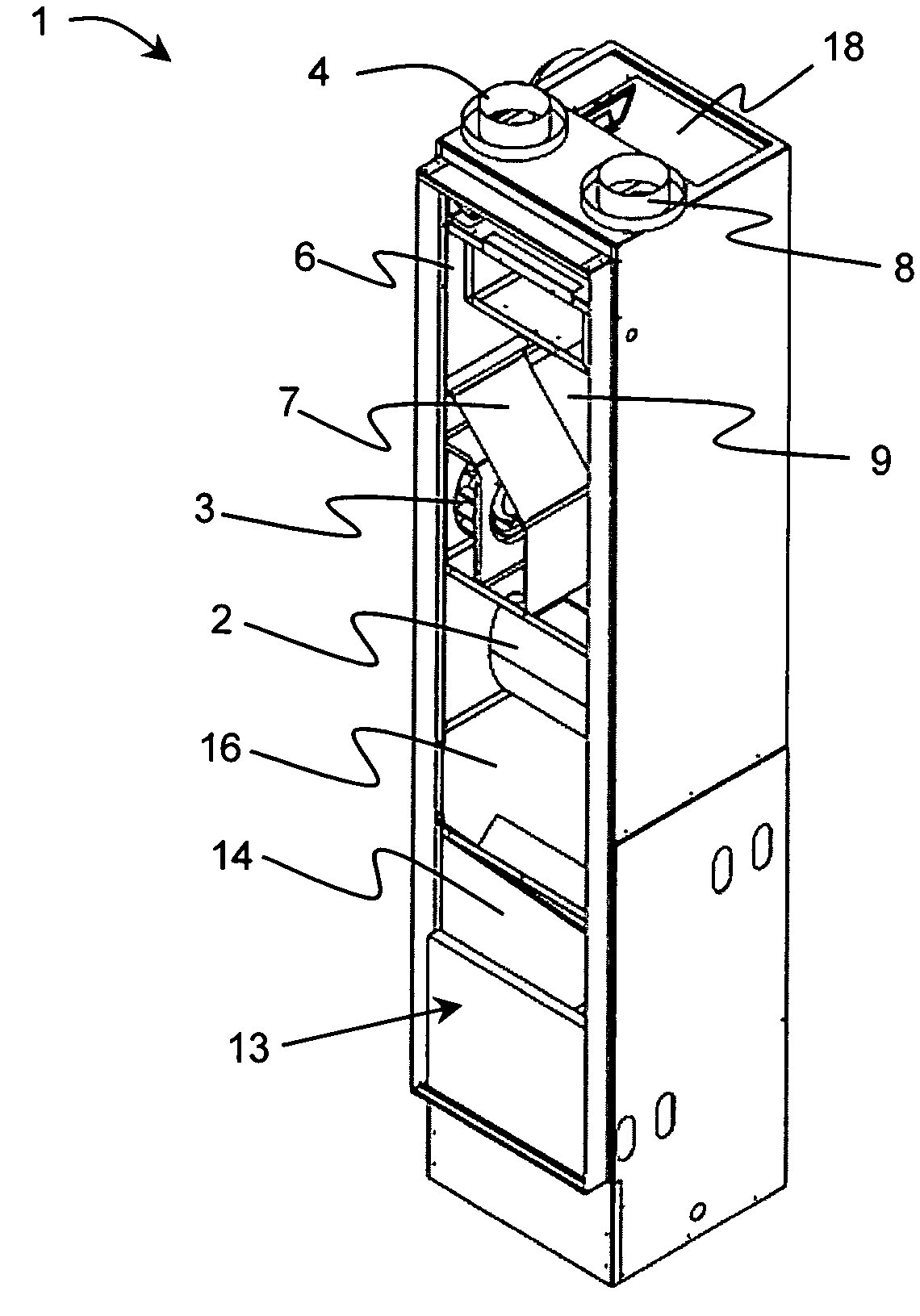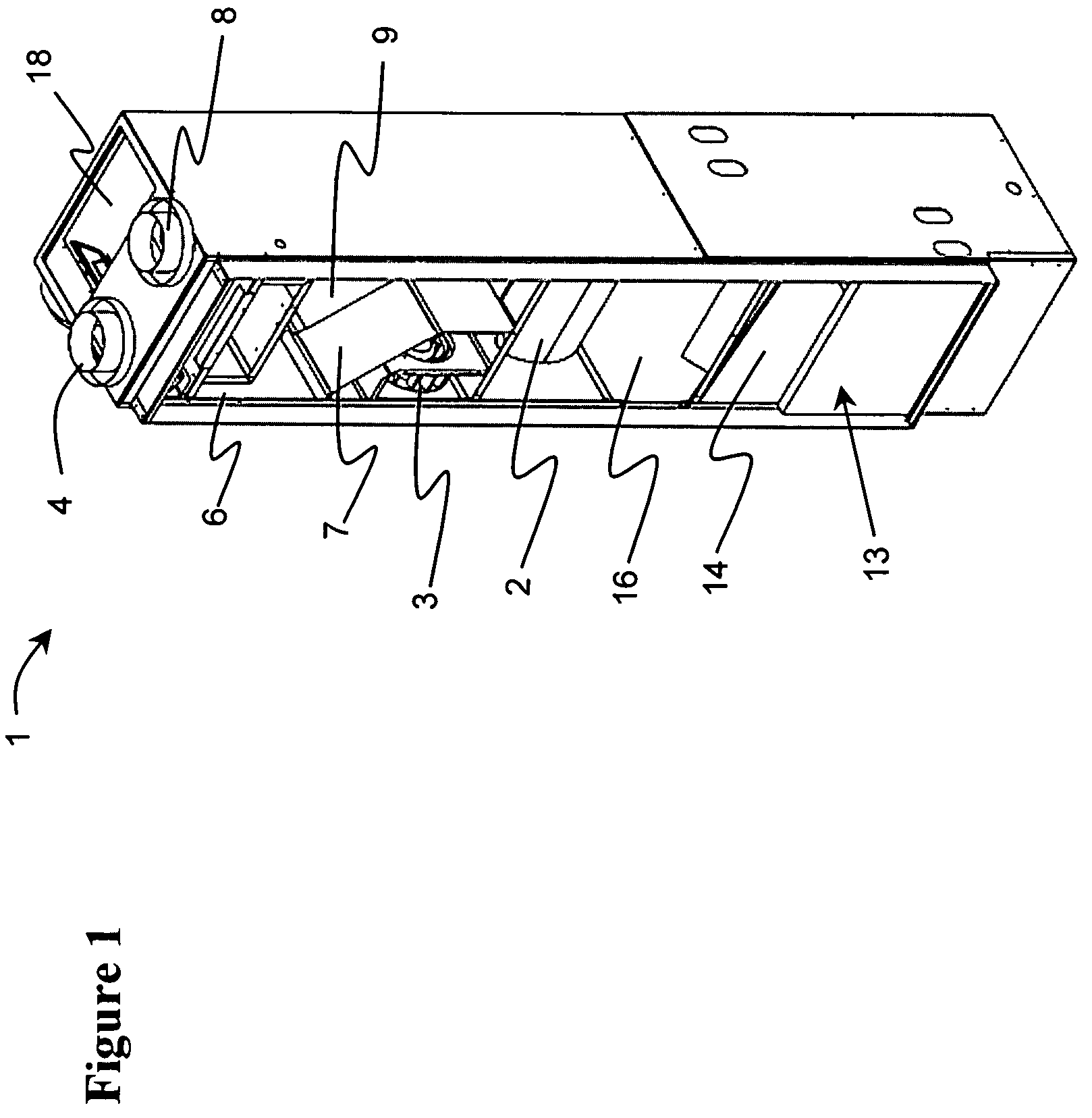Heat recovery ventilator with defrost
a ventilator and defrost technology, applied in the field of defrost systems, can solve the problems of heat energy loss, negative pressure on the interior space of the interior space, and prior art hrv systems that cannot solve,
- Summary
- Abstract
- Description
- Claims
- Application Information
AI Technical Summary
Benefits of technology
Problems solved by technology
Method used
Image
Examples
Embodiment Construction
[0034]With reference to FIGS. 1 to 3c, the integrated fan coil of the present invention includes a generally rectangular housing 1 resting on one end, with a main fan 2 and a secondary fan 3 disposed proximate the middle thereof. During normal operation, the main fan 2 draws in fresh air from the outside, draws in return air only from a first group of selected rooms on the inside of the structure, and delivers supply air to all of the rooms on the inside of the structure. A secondary fan 3 is provided for drawing in exhaust air only from a second group of selected interior rooms for preheating the fresh outside air, as explained hereinafter, and delivering the exhaust air to the outside of the structure. Although this description refers to specific locations of air ports, it should be noted that the location of these ports may vary as building design dictates.
[0035]During normal operation, fresh outside air is drawn in by the main fan 2 through the fresh air intake port 4, at an upp...
PUM
 Login to View More
Login to View More Abstract
Description
Claims
Application Information
 Login to View More
Login to View More - R&D
- Intellectual Property
- Life Sciences
- Materials
- Tech Scout
- Unparalleled Data Quality
- Higher Quality Content
- 60% Fewer Hallucinations
Browse by: Latest US Patents, China's latest patents, Technical Efficacy Thesaurus, Application Domain, Technology Topic, Popular Technical Reports.
© 2025 PatSnap. All rights reserved.Legal|Privacy policy|Modern Slavery Act Transparency Statement|Sitemap|About US| Contact US: help@patsnap.com



